Group for Nanoplasmonics and Metamaterials
Design of single-photon infrared detectors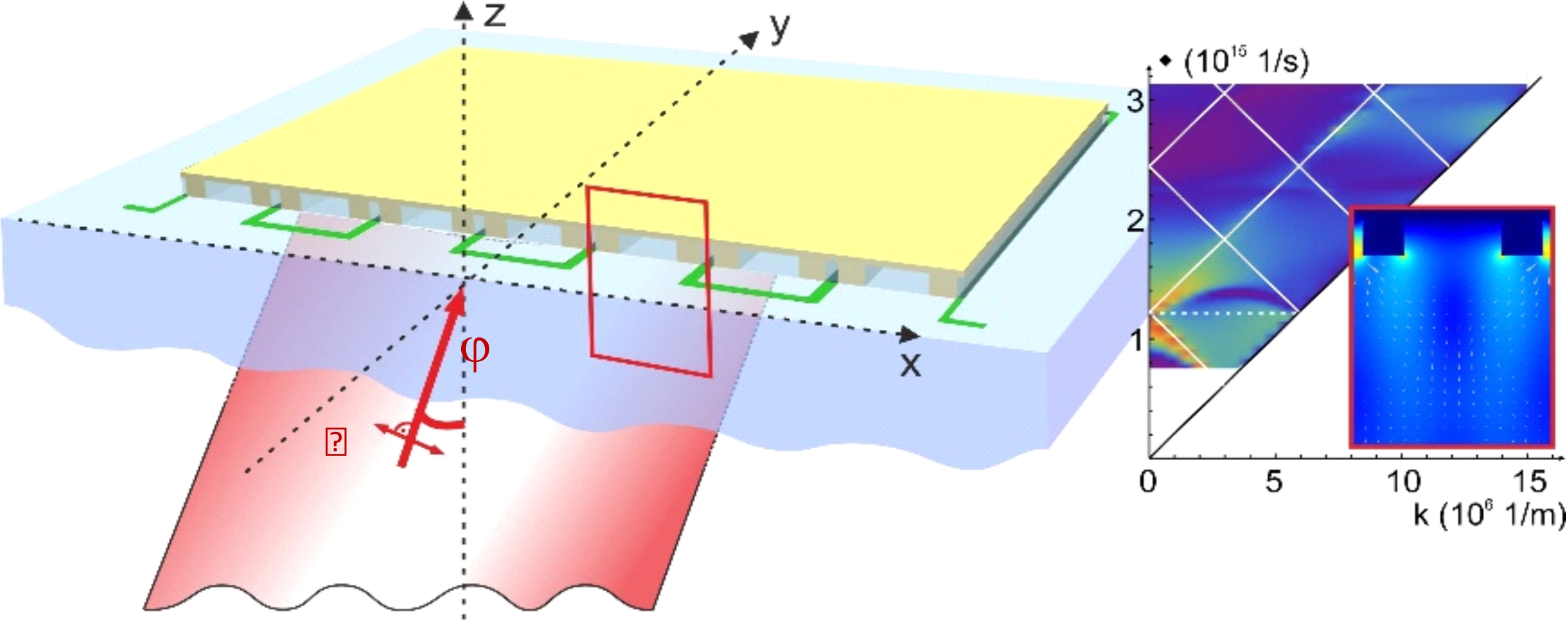
In this project infrared single-photon detectors integrated with plasmonic structures are designed to ensure the efficient readout of encoded quantum information with high efficiency and good fidelity. Using FEM-based simulation software and implementing an house developed numerical optimization algorithm, the absorption is maximized by controlling the polarization specificity according to user-specified criteria. Configurations providing maximal absorption and polarization (un)specificity are determined by inspecting the device dispersion characteristics, the optical response, near-field distribution and effective parameters. [1, 2, 3, 4, 5, 6, 7, 8, 9].
Design of nanolasers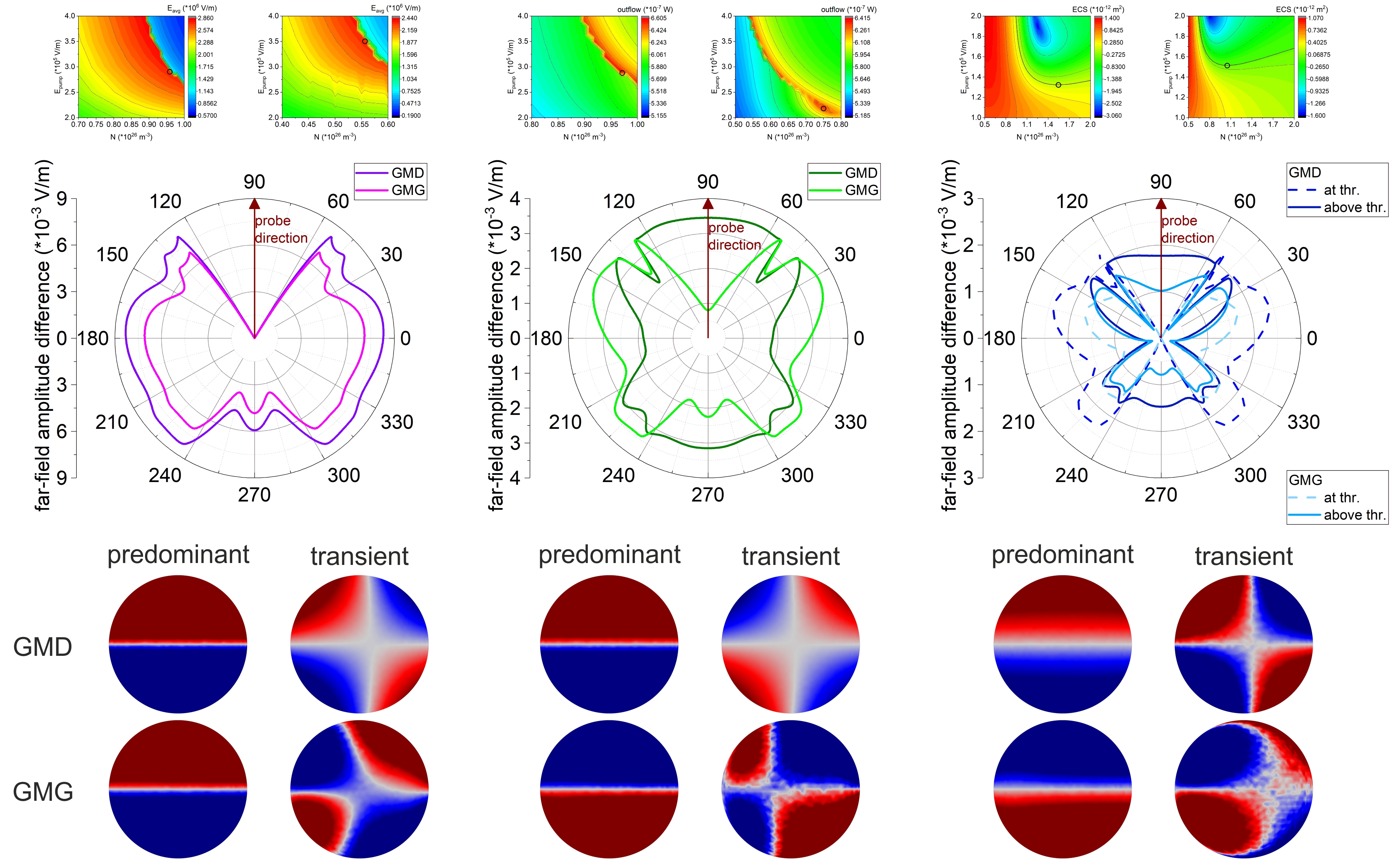
The objective of this project is to design individual and periodic plasmonic resonators that are simultaneously resonant at the excitation and emission wavelengths and capable of enhancing the stimulated emission and reaching the spaser threshold. Using FEM and FDTD-based simulation software and an in-house developed optimization algorithm the next generation nanolasers are designed to reduce the laser threshold and to maximize the (directional) out-coupling efficiency according to user-defined criteria. Numerical pump-probe experiments are performed on the predesigned and optimized lasing systems to study the optical responses, optical cross-sections, polar-azimuthal near-field and far-field distributions. [10, 11] (Enhancement of stimulated emission), [12, 13, 14, 15, 16, 17] (Enhancement of spontaneous emission).
Design of metamaterials for resonant enhancement and coherent perfect absorption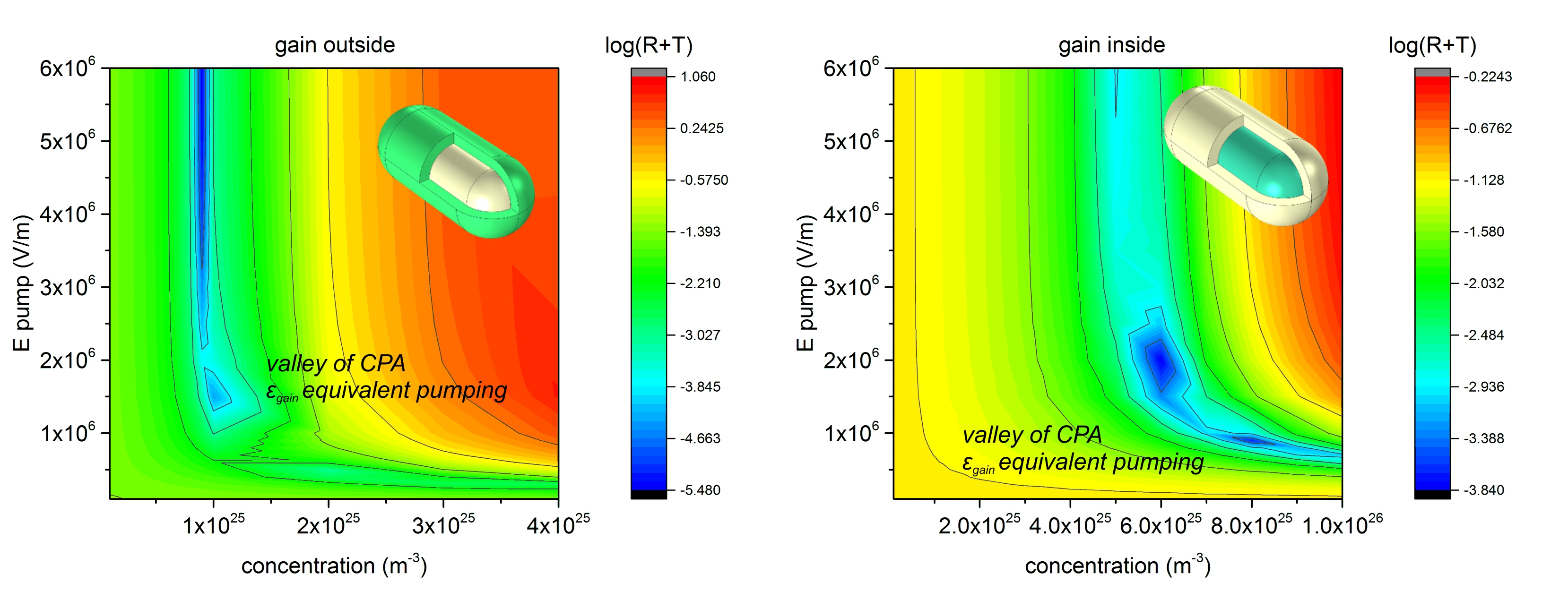
The objective is to design metamaterials composed of sub-wavelength periodic patterns of convex and concave metal nanoresonators to improve the stimulated emission. Using FEM and FDTD-based simulation software the transmission or reflection directionality is optimized at the emission wavelength. By mapping the optical response of the passive and active systems obtained through optimization, the level of amplification and out-coupling efficiency is determined. The purpose is to achieve resonant amplification (accompanied by huge near-field enhancement) and coherent perfect absorption phenomena. [18, 19].
Design of metamaterials for information readout and cloaking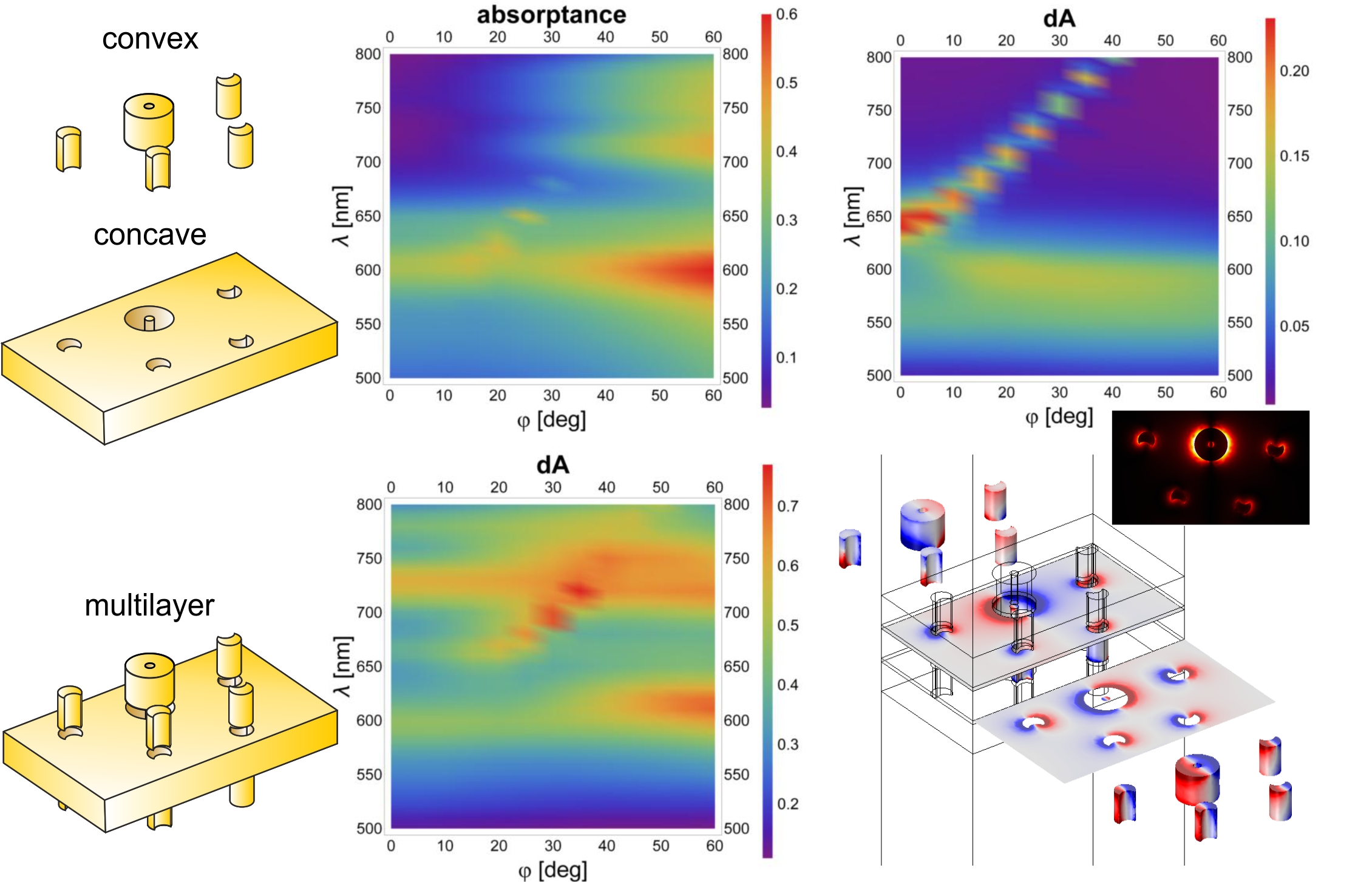
The objective is to design metamaterials composed of sub-wavelength periodic patterns of convex and concave metal objects to achieve (i) negative refractive index material behavior and (ii) nonreciprocal responses. Using FEM-based simulation software, geometrical parameters of multilayers (constructed with Babinet complementary patterns of convex and concave miniarrays) are optimized to achieve a (i) negative real part of the refractive index and (ii) optical rectification (unidirectional propagation) within the selected – preferably visible – spectral range. The purposes include (i) achievement of perfect -namely below diffraction limit and lossless imaging and (ii) improvement of the cloaking phenomenon in order to approximate the limits of optical information concealment. [20, 21, 22, 23, 24, 25, 26, 27].
Plasmonic response to short-pulse illumination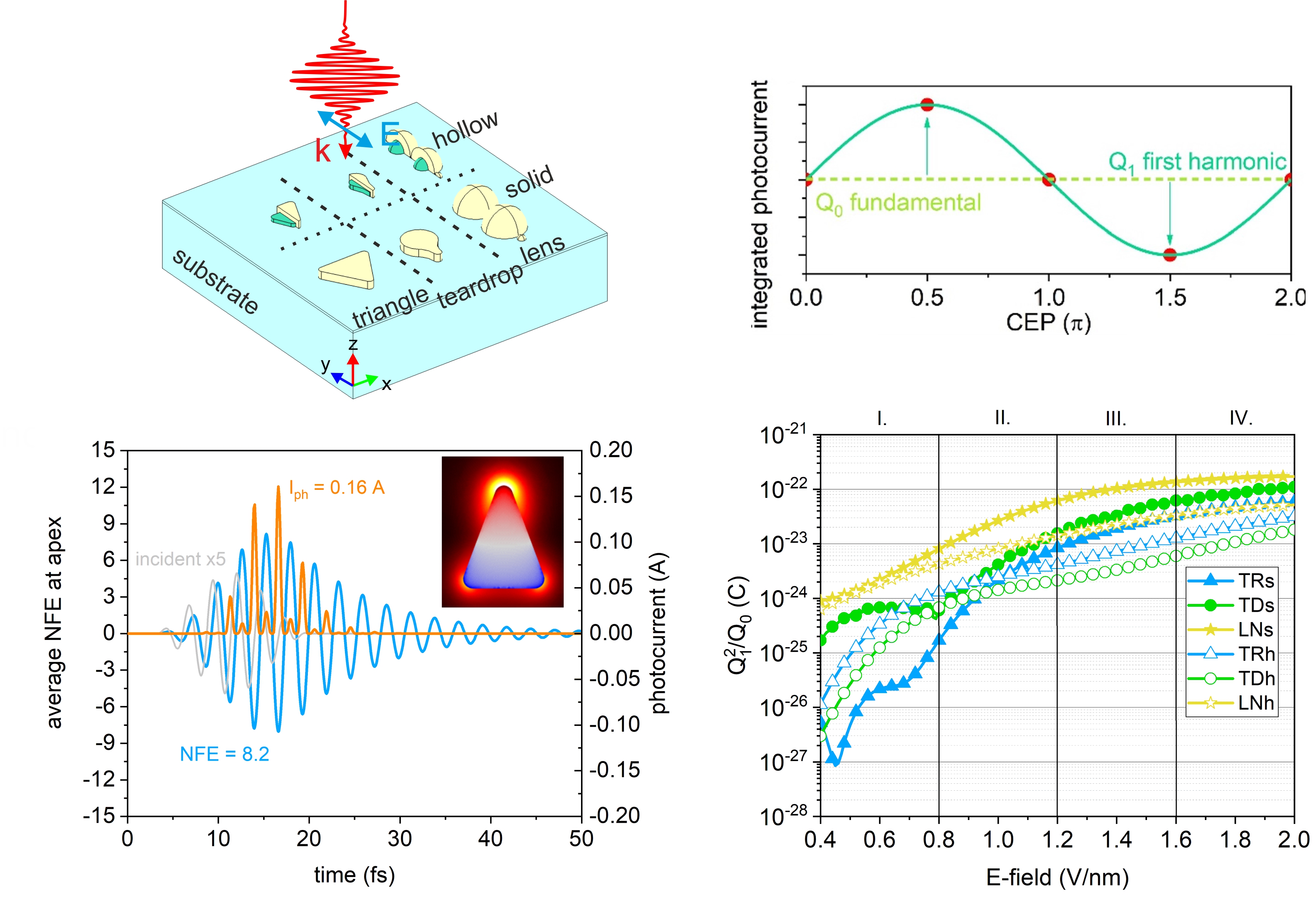
The response of numerically designed noble metal nanoantennas to short-pulse illumination is interrogated in the time-domain. FEM and FDTD numerical methods allow for the determination of the tunneling between nanoparticles and the control of screening occurring at higher intensity. Optimization is performed to maximize the few-cycle near-field enhancement and to minimize the number of cycles in the near-field developing on individual nanoresonators, thereby to achieve high sensitivity and good signal-to-noise ratio in the induced CEP-sensitive current detection. Due to collaboration with ELI-ALPS the CEP sensitive nanostructures can be experimentally realized and investigated. [28, 29].
Four-dimensional control of plasmonic interactions with short-pulse illumination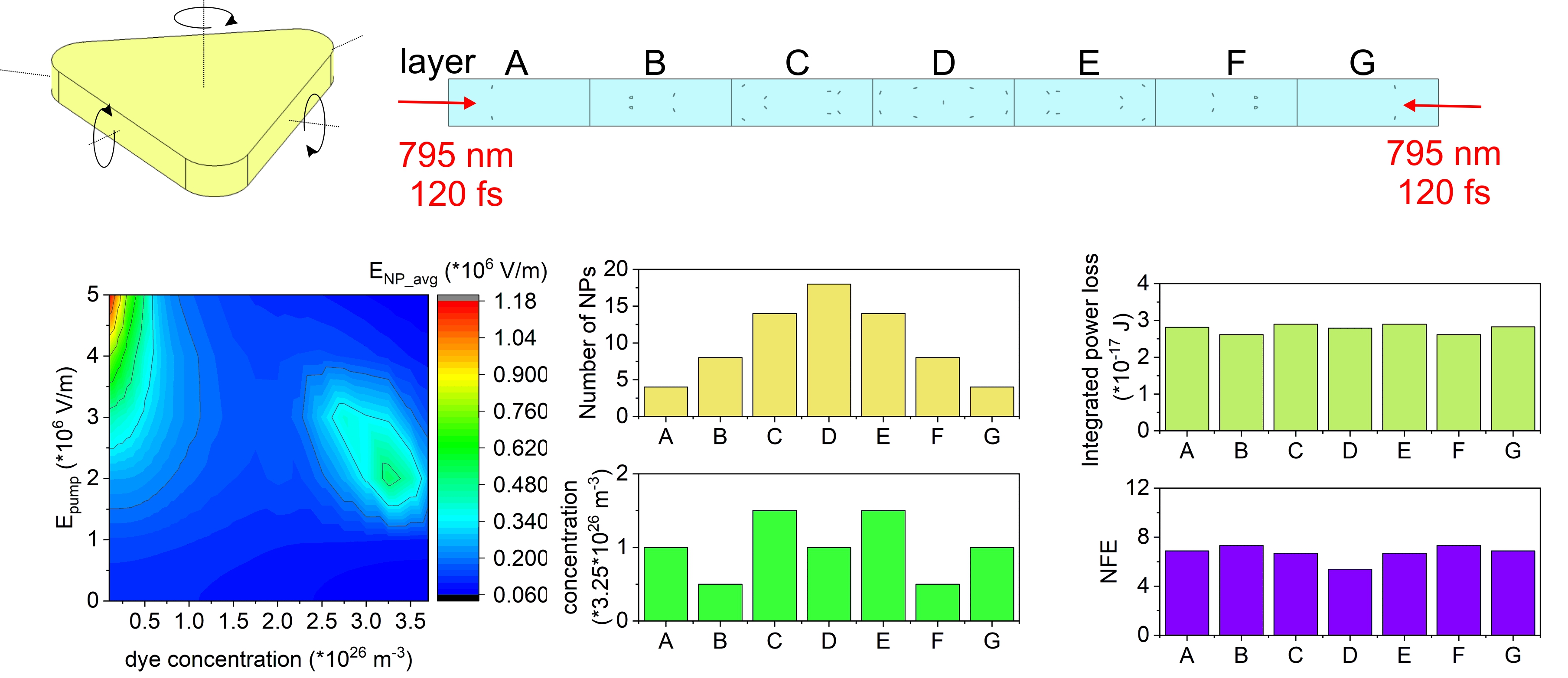
Several light-matter interaction phenomena require that the absorbed energy and near-field enhancement in target objects illuminated with short pulses are maximized, while the standard deviation of these quantities and the non-uniformity is minimized. Using time-domain FEM numerical methods optimization is conducted to determine the ideal number density distribution of random, as well as the optimal period of low and high-density ordered nanoantenna patterns, both in passive and active (dye-doped) targets. The goal is to induce random lasing/spasing, surface/volume lattice resonances, and epsilon-near-zero phenomena that have the potential to result simultaneously in the highest energy deposition and near-field enhancement. [30, 31, 32, 33, 34, 35, 36, 37, 38, 39, 40, 41].
Biosensorization
The plasmonically enhanced near-field is used to improve the sensitivity in bio-detection by (i) localized modes on nanoresonators, (ii) coupled long-range surface plasmon polaritons on one-dimensional gratings, (iii) coupled localized and propagating modes on two-dimensional patterns. The projects are realized in framework of cooperations with various departments at the SZTE, Adoptim & BRC. [42, 43, 44, 45, 46, 47, 48, 49, 50].
 Home
Home People
People Research
Research Publications
Publications Gallery/Movie
Gallery/Movie Lab/Facilities
Lab/Facilities